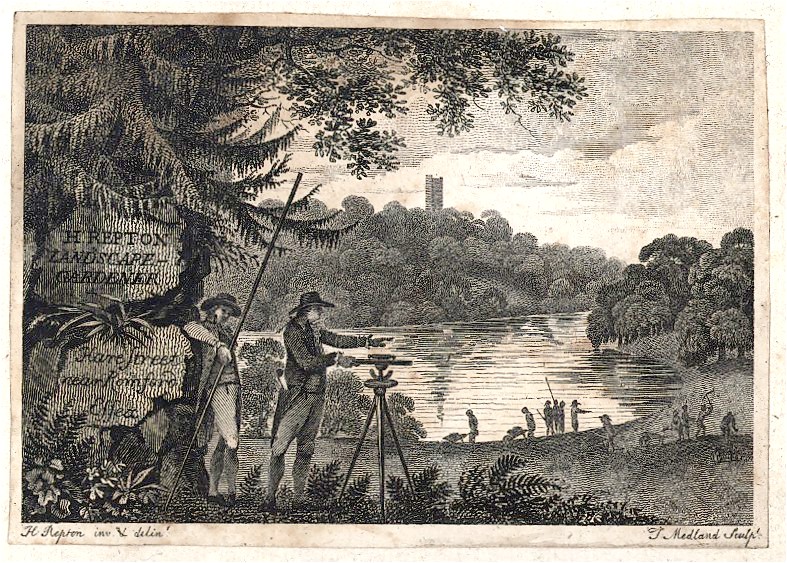Humphry Repton: Landscape Gardener
Barbara Deason & Susan Darling, Joint Coordinators, LPGT Research Group
2018 will see the bicentenary of the death of Humphry Repton, the leading landscape gardener of late Georgian England.
Repton came relatively late to garden design: whereas his 'predecessor' Lancelot Brown's career had been firmly centred on his early prowess as a gardener, Repton was first and foremost a businessman who only turned to garden design in his late thirties following several unsuccessful attempts to succeed in the textile industry, a field he had entered solely to meet family expectations. Once his father died c.1778, he felt free to move on and, establishing himself as a country squire in Norfolk, he concentrated for a while on turning his real interests — botany, history, writing and sketching — into a business.
By 1788 he was ready to launch a landscape design service for property owners with sizable properties and grounds to develop or improve. His natural talents, his business know-how, and the many contacts he had acquired as an aspiring merchant combined to enable him to establish a successful career. Repton was the first person to describe himself as ‘Landscape Gardener’.
Repton followed Brown both in time: he secured his first landscape design contract c.1788, just five years after Brown's death; and often in relation to the estates where he worked: many sites that Brown had originally laid out were subsequently altered, or indeed 'improved' by Repton. However, unlike Brown, Repton normally only provided designs which were then implemented by other people, with Repton providing periodic advice and oversight as required.
It is in the application of this latter practice that Repton is maybe best known: Repton produced what have become known as Red Books for his clients. In landscape format and often bound in red Morocco leather, each book provided copious illustrations through which Repton clearly depicted the current landscape of the property he was being asked to design or improve, coupled with, under a moveable flap, a view of the landscape as it would look once his design had been implemented. Images were accompanied by a detailed description of the work that would be required. Although Repton is believed to have worked on over 400 sites, not all were provided with a Red Book: estimates for the number of Red Books he produced range from 200 to 220, a little over half of which are known to be still in existence.
The University of New South Wales has recently digitised a number of Repton's Red Books, using a highly effective slider mechanism that reveals the proposed design. Red Books illustrated include the London sites of Brandsbury, Wembley and Langley Park. These can be seen at http://dxlab.sl.nsw.gov.au/repton-flip-book-2/.
Repton was also a prolific writer — on gardening and landscape design, as well as his own memoirs; and contributed many engravings of garden scenes to the yearly almanac, Peacock's Polite Repository.
Like 'Capability' Brown, Repton is generally seen as a designer of country house estates, and yet, also like Brown, many of his successful commissions were in London: it is thought he was involved in over 50 sites within the capital, including a number of London squares. One of his early commissions was for Lady Salusbury at Brandsbury, which was the first for which he produced a Red Book, in 1789.
Over the next two years, LPGT Research Group volunteers will be seeking to uncover the extent of his involvement in a number of those sites — some still in existence; others now 'lost' but with interesting histories or still visible remnants which illustrate Repton's contribution to London's landscape.
Would you like to help with researching Repton's sites in London?
Whether you are an experienced researcher or would like to learn how to research a garden's history, the LPGT Research Group would welcome your participation. Support and guidance is available within an active, lively and informal group. Get in touch with us at research@londongardenstrust.org.

Public Domain Wikimedia Commons

Before (above) and after (below) views for Brandsbury, from Sketches and Hints on Landscape Gardening (1795)
(Metropolitan Museum of Art)
